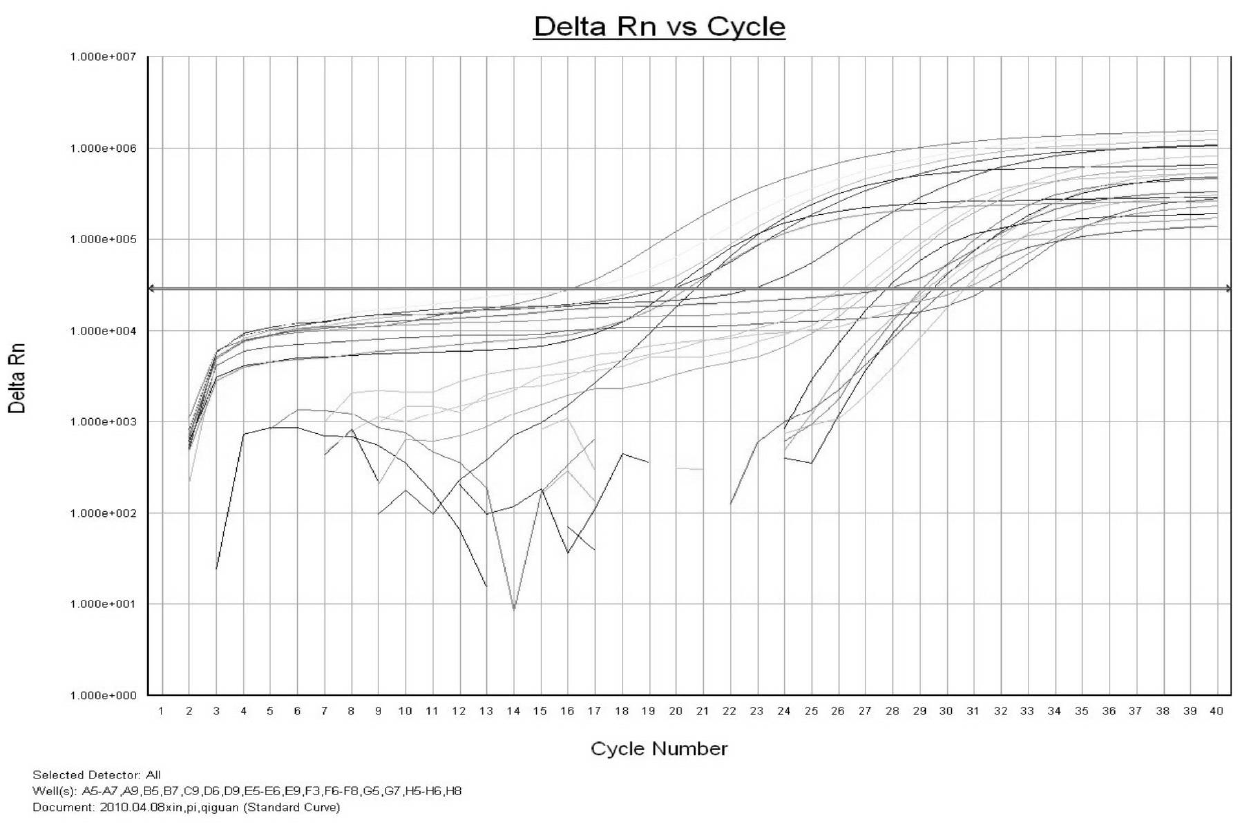Primers, probe and kit for detecting duck-origin coronavirus through fluorescence quantitative RT-PCR (Reverse Transcription-Polymerase Chain Reaction)
A technology of RT-PCR and coronavirus, which is applied in the field of molecular biology detection of viruses, can solve problems such as the lack of new molecular biology detection methods, achieve important economic value and social significance, strong specificity, and avoid false positive effects
- Summary
- Abstract
- Description
- Claims
- Application Information
AI Technical Summary
Problems solved by technology
Method used
Image
Examples
Embodiment 1
[0028] Example 1: Establishment of Fluorescent Quantitative RT-PCR Detection Method
[0029] (1) Processing of samples to be tested: take 1.0 g of corresponding tissues and organs (such as trachea, heart, kidney, etc.), put them into a 1.5 mL sterilized centrifuge tube, cut them into pieces, and add PBS buffer solution sterilized by autoclaving at a ratio of 1 g. : 5mL, repeatedly freeze-thawed at -20℃ for 3 times, centrifuged at 1000rpm for 5min; discarded the precipitate, took the supernatant in another 1.5mL sterilized centrifuge tube, centrifuged at 8000rpm for 10min; discarded the precipitate, took the supernatant in another 1.5mL Centrifuge at 12,000 rpm for 10 min in a 1 mL sterilized centrifuge tube; discard the precipitate, take the supernatant into another 1.5 mL sterilized centrifuge tube, and filter with a 0.22 μm filter.
[0030] (2) Handling of standard viruses
[0031] The duck-derived coronavirus ZZ2004 strain was inoculated into 10-day-old SPF chicken embryos...
Embodiment 2
[0074] Embodiment 2: Fluorescence quantitative PCR detects the distribution of virus in chicken body
[0075] After using the method and kit established in the above-mentioned Example 1 to artificially infect the duck-derived coronavirus ZZ2004 strain in 7-day-old SPF chicks, the content of the virus in each organ was detected and found that multiple organs of the chicken were infected with the virus. After infection Viral nucleic acid can be detected in lungs, kidneys, glandular stomach, duodenum, cecum and other organs within 3 hours; viral nucleic acid can be detected in liver, trachea, spleen, and ileum 6 hours after infection; Viral nucleic acid was detected in the bursa, rectum, and thymus, and the duration of viral nucleic acid in each tissue was: duodenum (957h), cecum (957h), liver (954h), rectum (951h), glandular stomach (717h ), bursa (711h), pancreas (696h), kidney (597h), thymus (591h), jejunum (576h), trachea (498h), lung (405h), heart (384h), ileum (258h), splee...
PUM
 Login to View More
Login to View More Abstract
Description
Claims
Application Information
 Login to View More
Login to View More - R&D
- Intellectual Property
- Life Sciences
- Materials
- Tech Scout
- Unparalleled Data Quality
- Higher Quality Content
- 60% Fewer Hallucinations
Browse by: Latest US Patents, China's latest patents, Technical Efficacy Thesaurus, Application Domain, Technology Topic, Popular Technical Reports.
© 2025 PatSnap. All rights reserved.Legal|Privacy policy|Modern Slavery Act Transparency Statement|Sitemap|About US| Contact US: help@patsnap.com



